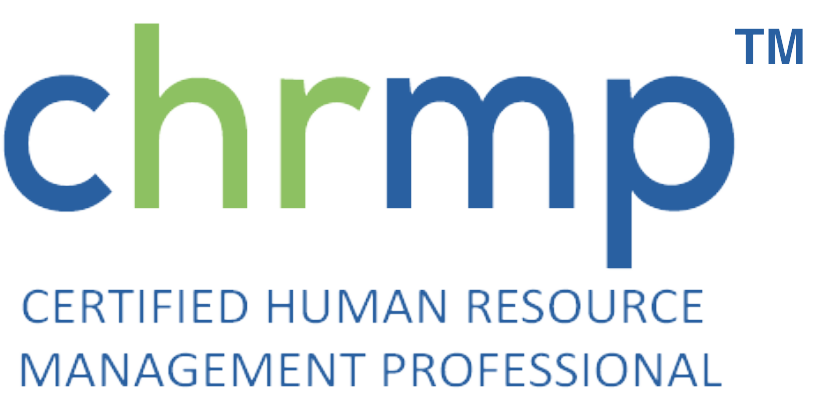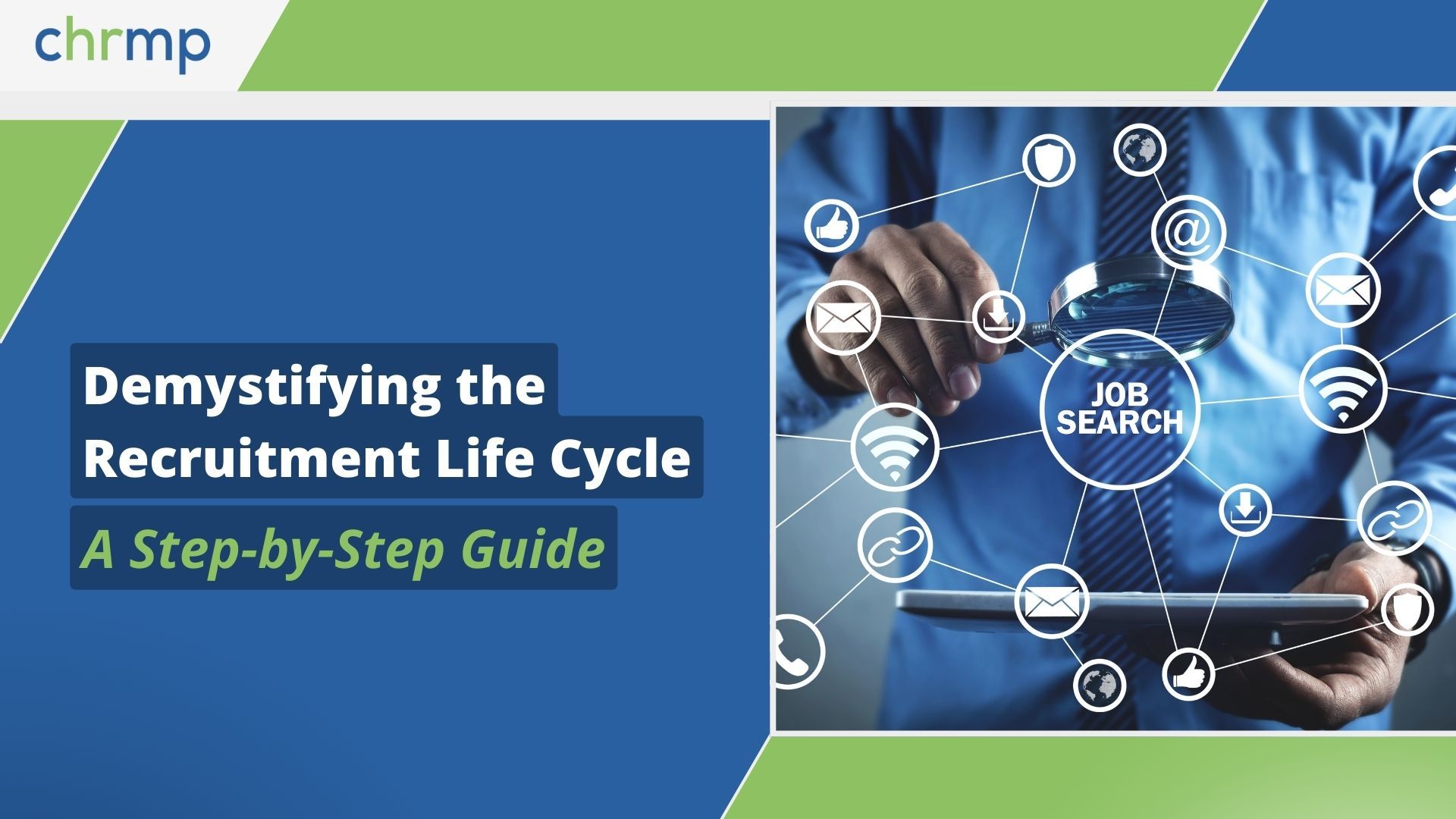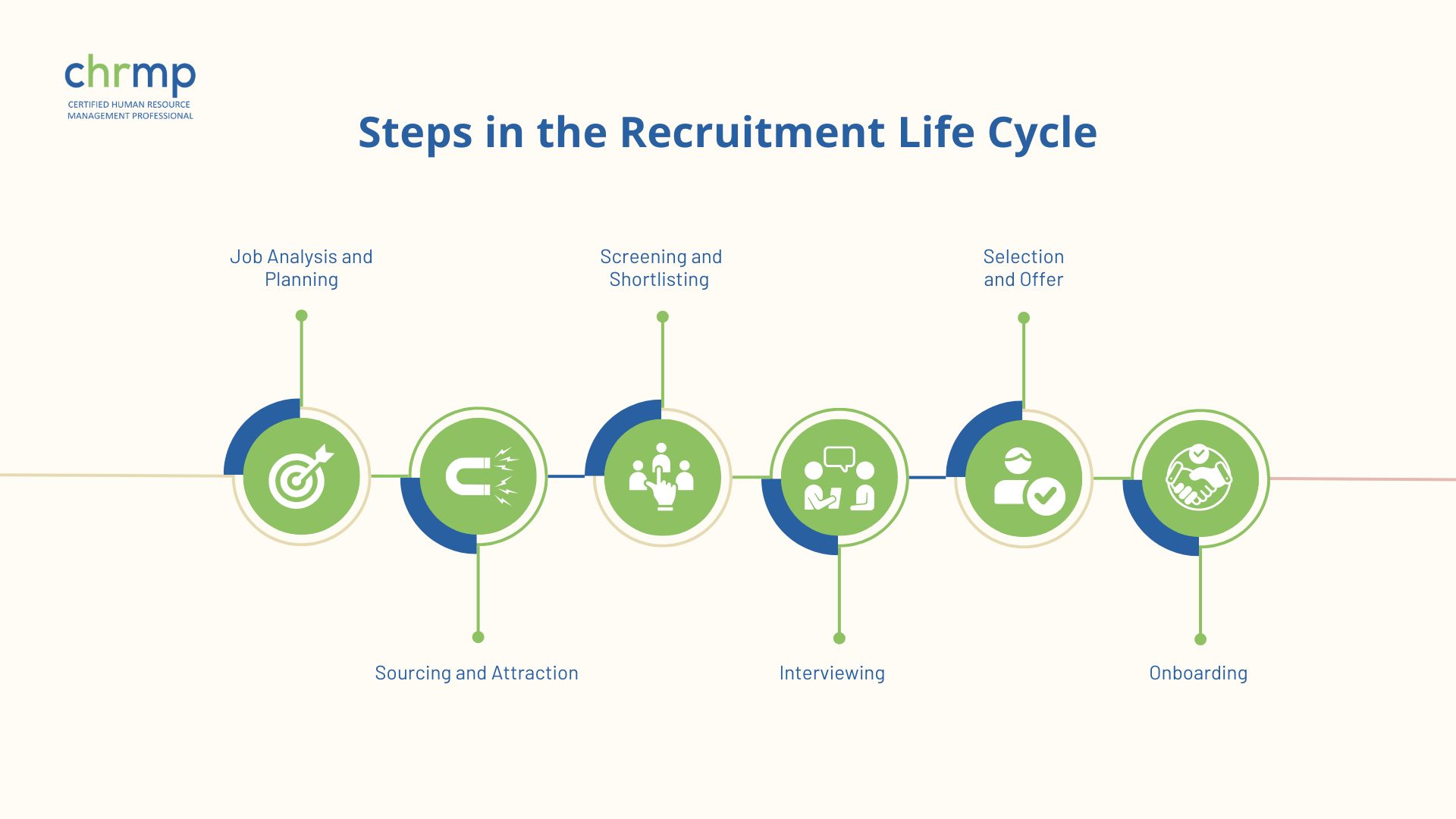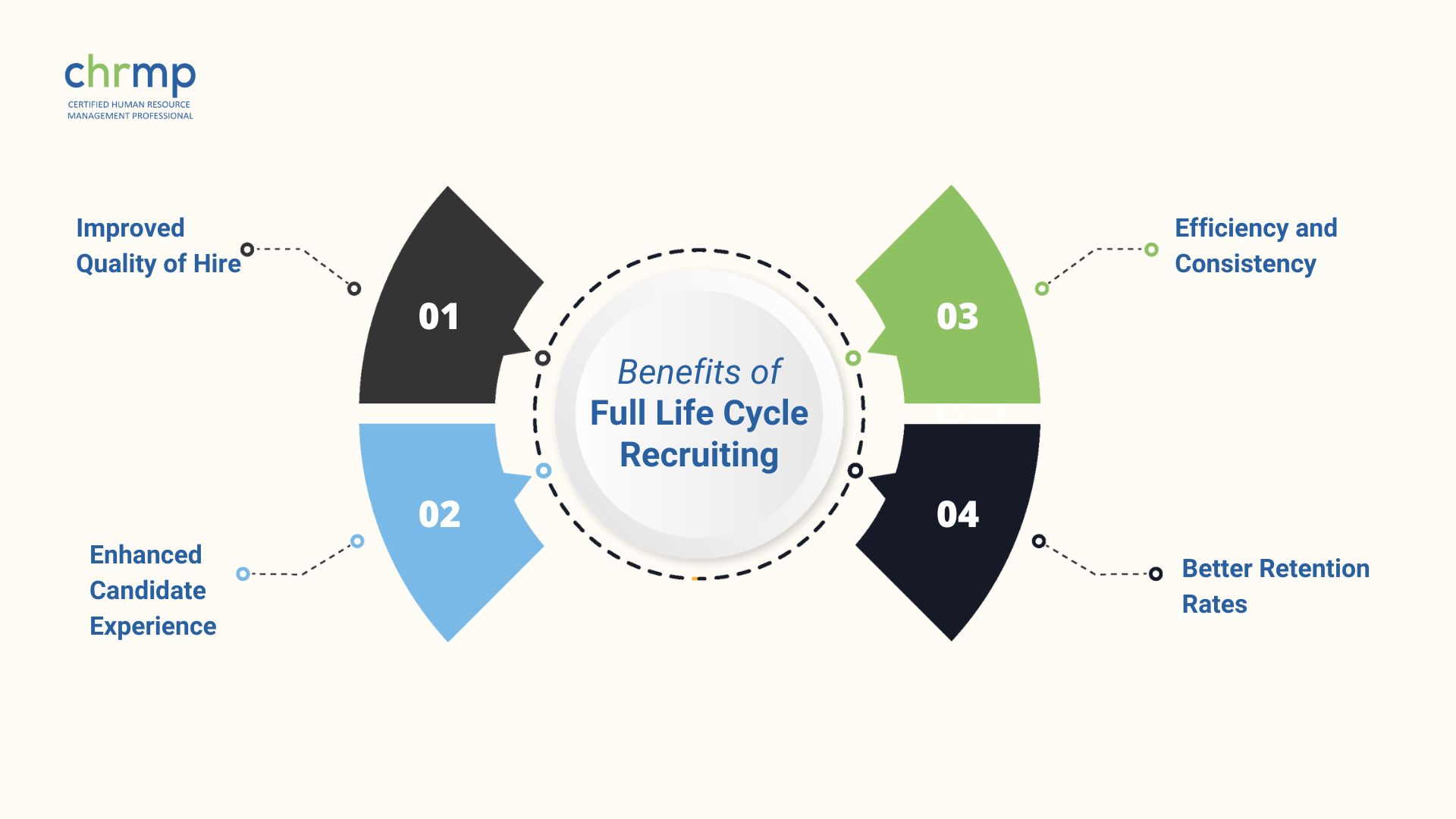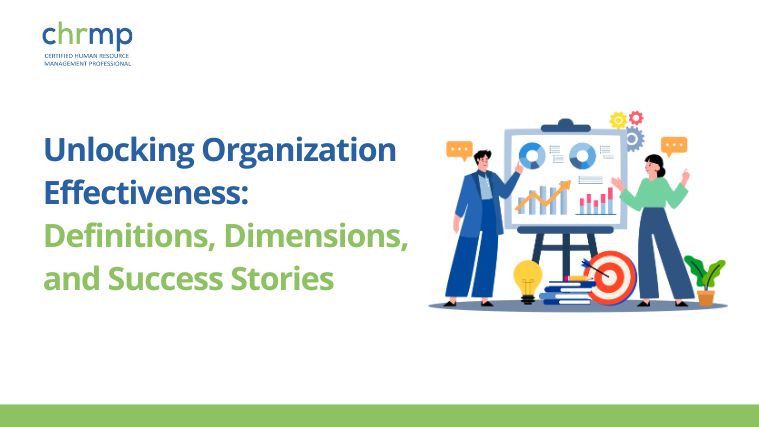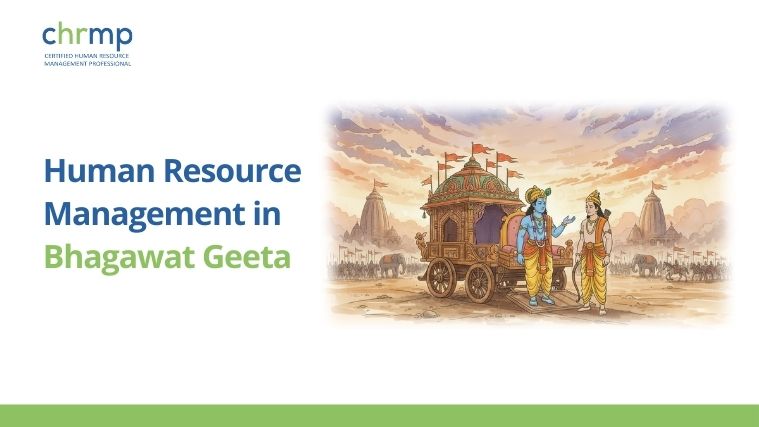Have you ever wondered what goes into the complete recruitment life cycle from start to finish? Understanding this process is crucial for HR professionals looking to attract, hire, and retain the best talent in an increasingly competitive job market.
In this comprehensive guide, we will explore the full life cycle recruiting process, breaking down each step and highlighting best practices to help you optimize your hiring strategy
What is Full Recruitment Life Cycle?
Full life cycle recruiting, also known as end-to-end recruitment, encompasses every phase of the hiring process, from identifying the need for a new employee to bringing them on board. This comprehensive approach ensures that every step is meticulously managed to achieve the best hiring outcomes.
In today’s dynamic job market, full life cycle recruiting has become essential for organizations seeking to maintain a competitive edge. By understanding and implementing this process, companies can streamline their hiring practices, improve candidate experiences, and ultimately secure top talent.
Steps in the Recruitment Life Cycle:
1. Job Analysis and Planning
The first step involves identifying the need for a new hire, defining the role, and outlining the qualifications and skills required. This stage is crucial for laying a solid foundation for the entire recruitment process. A thorough job analysis helps in creating an accurate job description, which is critical for attracting the right candidates.
Best Practices:
- Conduct a detailed job analysis by consulting with current employees and supervisors.
- Define clear job responsibilities and required qualifications.
- Create a compelling job description that highlights the unique aspects of the role and the company culture.
2. Sourcing and Attraction
At this stage, recruiters employ various strategies to attract potential candidates. This includes posting job ads, utilizing social media, and leveraging professional networks to find suitable candidates. Effective sourcing is crucial for building a strong talent pipeline.
Best Practices:
- Use a mix of online job boards, social media platforms, and professional networks.
- Develop an employee referral program to tap into existing employees’ networks.
- Attend industry conferences and career fairs to connect with potential candidates.
3. Screening and Shortlisting
Once applications start pouring in, the next step is to screen resumes and shortlist candidates who meet the job criteria. This process involves evaluating qualifications, experience, and cultural fit. Effective screening helps narrow down the pool of candidates to those who are most likely to succeed in the role.
Best Practices:
- Use applicant tracking systems (ATS) to streamline the screening process.
- Develop standardized screening criteria to ensure consistency.
- Conduct initial phone screenings to assess candidates’ interests and fit.
4. Interviewing
Shortlisted candidates are then invited for interviews. This step is vital for assessing candidates’ skills, experience, and alignment with the company culture. Structured interviews and assessment tools are often used to ensure objective evaluations.
Best Practices:
- Use a mix of interview formats, including phone, video, and in-person interviews.
- Develop a structured interview guide with standardized questions.
- Incorporate behavioral and situational questions to gauge candidates’ problem-solving abilities.
5. Selection and Offer
After the interviews, the best candidate is selected, and an offer is made. This stage involves negotiating terms and conditions, ensuring that the candidate is motivated to join the organization. Clear communication and a positive candidate experience are crucial during this phase.
Best Practices:
- Use a collaborative approach to decision-making, involving key stakeholders.
- Provide candidates with a detailed offer letter outlining compensation, benefits, and job expectations.
- Be prepared to negotiate and address candidates’ concerns promptly.
6. Onboarding
The final step is onboarding the new hire. A well-structured onboarding process helps new employees integrate into the company smoothly and quickly become productive members of the team. Effective onboarding can significantly impact employee retention and satisfaction.
Best Practices:
- Develop a comprehensive onboarding plan that includes orientation, training, and mentoring.
- Assign a buddy or mentor to help new hires navigate the organization.
- Gather feedback from new hires to continuously improve the onboarding process.
Specialized Recruitment Life Cycles
Different industries may have specific recruitment processes. For instance, the IT recruitment life cycle involves specialized sourcing techniques and technical assessments to identify candidates with the right technical skills. Similarly, the US IT recruitment life cycle has its unique challenges and processes tailored to the American job market.
IT Recruitment Life Cycle:
The IT sector often requires candidates with specialized technical skills and certifications. Recruitment in this field may involve coding assessments, technical interviews, and portfolio reviews.
Example: A leading IT services company used hackathons as a sourcing strategy to identify top software engineers. Participants were evaluated based on their coding skills and problem-solving abilities, leading to successful hires.
US IT Recruitment Life Cycle:
Recruiting IT talent in the US can be competitive due to high demand and limited supply. Companies may need to offer competitive compensation packages and career development opportunities to attract top candidates.
Example: A Silicon Valley startup offered equity options and remote work flexibility to attract and retain skilled IT professionals in a competitive job market.
The Impact of Technology on the Recruitment Life Cycle
Technology has revolutionized the recruitment life cycle, making it more efficient and data-driven. From sourcing to onboarding, various technological tools and platforms are available to streamline the process.
Applicant Tracking Systems (ATS):
ATS helps manage job postings, applications, and candidate communications in one centralized platform. These systems automate resume screening, schedule interviews, and track candidate progress, saving time and reducing administrative burden.
Artificial Intelligence (AI):
AI-powered tools can enhance various stages of the recruitment life cycle. For instance, AI can be used for resume parsing, candidate matching, and even conducting initial interviews through chatbots. These tools help identify the best candidates quickly and reduce unconscious bias.
Video Interviewing Platforms:
Video interviewing tools have become essential, especially with the rise of remote work. These platforms allow recruiters to conduct interviews with candidates from different locations, making the process more flexible and efficient.
Benefits of Full Life Cycle Recruiting
Implementing a full life cycle recruiting approach offers numerous benefits:
- Improved Quality of Hire: A thorough process ensures that only the best candidates are selected.
- Enhanced Candidate Experience: A well-structured recruitment process provides a positive experience for candidates, enhancing the company’s employer brand.
- Efficiency and Consistency: Standardized procedures streamline the hiring process and ensure consistency across the organization.
- Better Retention Rates: Effective onboarding and clear communication contribute to higher employee satisfaction and retention.
Conclusion
Understanding and implementing a full life cycle recruitment process is essential for HR professionals aiming to hire and retain top talent. By following the steps outlined above, organizations can create a structured and efficient hiring process that meets their strategic goals. The impact of technology further enhances the effectiveness of this process, making it more streamlined and data-driven.
Are you ready to refine your recruitment process and achieve better hiring outcomes? Start today by evaluating your current practices and making necessary improvements to embrace the full recruitment life cycle. Leveraging technology, adhering to best practices, and continuously optimizing each stage will help you attract and retain the best talent in your industry.
